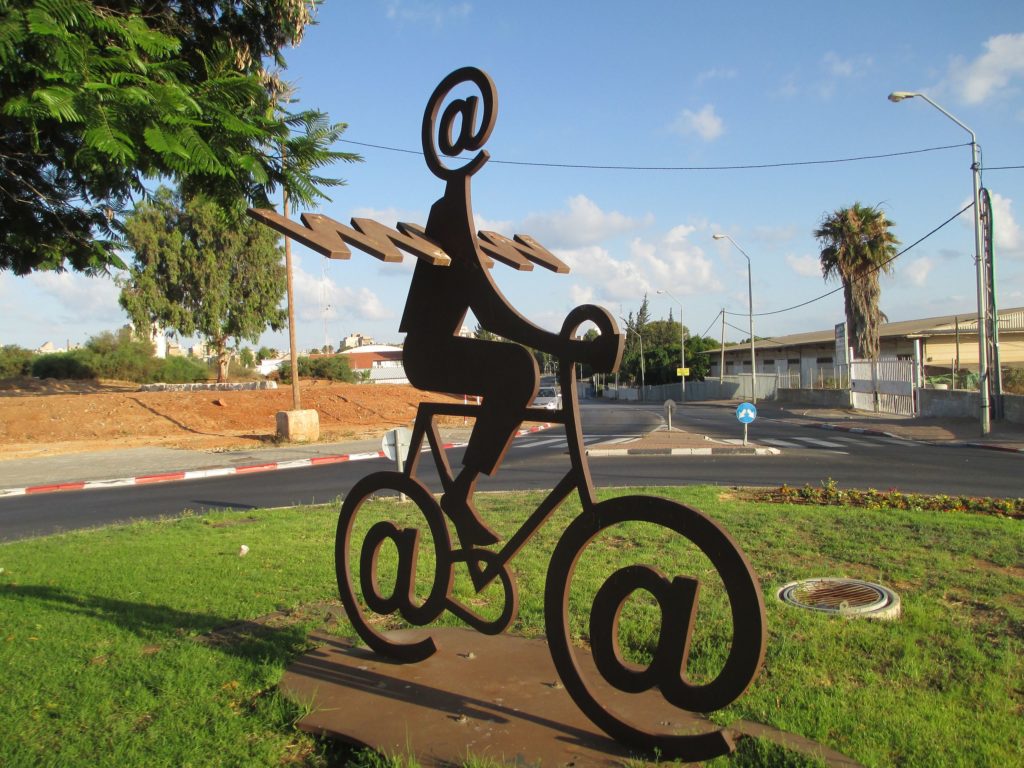
Attribution: Dr. Avishai Teicher Pikiwiki Israel
CC BY 2.5
The expression “creative destruction” was popularized by Joseph Schumpeter in his book Capitalism, Socialism and Democracy, first published in 1942. According to Schumpeter:
Capitalism […] is by nature a form or method of economic change and ….never can be stationary. […] The fundamental impulse that sets and keeps the capitalist engine in motion comes from the new consumers’ goods, the new methods of production or transportation, the new markets, the new forms of industrial organization that capitalist enterprise creates.
[… Capitalism requires] the perennial gale of Creative Destruction.
In Schumpeter’s vision, innovative entry by entrepreneurs was the disruptive force that sustained economic growth, even as it destroyed the value of established companies.
A famous example of creative destruction was the industrial revolution, when machinery and improvements to the manufacturing process, such as the assembly line, almost completely replaced the old way of producing goods, based on artisan production.
The Internet
On 6 August 1991, the World Wide Web went live for the first time. Most people didn’t even know what it was.
The first image was uploaded to the Internet in 1992. It was a picture of a French parodic rock group called Les Horribles Cernettes.
In 1993, CERN announced that the World Wide Web was free for everyone to use and develop.
Then in 1995, the large, government-controlled networks finally opened up for commercial use. Advanced Internet technologies spread rapidly in businesses across the country. The rest, they say, is history.
Software is Eating the World
“Software is eating the world” said Nestcape’s founder, Marc Andreessen in 2011, to explain how technology and particularly the internet, is transforming the world of business.
The pace of change, disruption and creative destruction has never been faster. Digital platforms are now part of a new accelerate chapter of disruption. But how do they create such disruption?
How Platforms Disrupt
The idea of a platform is not new, it is simply a place where producers and consumers come together and interact creating value for both parties. Open air marketplaces were already doing it hundreds of years ago, but the addition of the digital technology created new opportunities and transformed local markets in truly global markets.
The disruption created by the internet so far, has occurred in two stages:
- Efficient pipelines ate inefficient pipelines. Most internet applications in the 1990s were creating highly efficient pipelines. They devised online systems for distributing good and services that were more efficient than those used by the traditional industries. These new online systems benefited from low marginal costs of distribution, and this allowed them to serve larger markets with smaller investments. Traditional media companies were the first to feel the pain of this new competition. Many newspapers were overcome by online news that could be distributed to a global audience without the traditional distribution costs.
- Platform eat pipelines. Now we have entered stage two of disruption, where platform eat pipelines. Stage two is happening in front of our eyes every single day. Think of Uber and Lyft disrupting local transportation, or Airbnb disrupting the hotel industry.
This second stage of transformation is happening because the Internet is not acting solely anymore as a distribution line or a pipeline, but it is also functionings as a creation infrastructure and a coordination mechanism.
Platforms are leveraging these new capabilities to create entire new business models. In addition, the physical and the digital are rapidly converging, enabling the Internet to connect and coordinate objects in the real world.
(Platform Revolution, p. 64)
Economic Advantages
Platforms have two economic advantages over traditional pipelines:
- They have a superior marginal economics of production and distribution. For example, if a hotel chain like Marriott wants to expand, they need to make a substantial investment in new buildings and staff. On the other hand, Airbnb, that owns no property, can expand without having to buy or build new real estate.
- The second advantage is the network effect. The network effect is the simple principle that the more users a network has, the more attractive it becomes for other people to join as well, because the usefulness of the network goes up with the number of users. This explains why, for example, Facebook has grown rapidly to its current astounding number of users.
The ecosystems that platforms create are a lot larger and include much more resources than most pipeline-type organizations can even dream of.
The Impact of Platform Disruption on Business Processes
The rise of platforms is also changing the business processes of value creation, value consumption, and quality control.
Value Creation: Platforms grow and transform markets when they can minimize the barriers to usage for their users. When they remove the barriers for the producers, they suddenly open up new sources of supply and increase value creation.
Platforms are constantly lowering barriers of entry for producers (suppliers) in many different markets. More suppliers naturally attract more buyers, and a virtuous feedback loop is put in motion.
Wikipedia, for example, opened up the floodgates of supply when devised a system that allows people to organize the world’s knowledge online. More interesting articles in Wikipedia attracted more readers, and potential writers, and so on.
Airbnb made possible for almost everybody to make some money out of their home by joining the hospitality industry. Many guests also become hosts on Airbnb, and the system keeps growing.
Value Consumption: Traditional consumer behavior is also changing. Platforms increase the opportunities of using products and services in new ways. New behaviors are created, like hopping into stranger’s cars (Uber, Lift) or accepting strangers in our homes (Airbnb, HomeAway), or dropping off our dogs in their homes (Rover).
Quality Control: When a new platform is launched there are some obstacles to be overcome, and one of the main ones is about the quality and reliability of what is being offered to the public.
When platforms open up a new source of supply, some undesirable effects come included. Youtube was initially filled with pirated videos and even pornography; Wikipedia articles sometimes listed living people as deceased.
However, over time, the successful platforms find a way to solve these problems by using some sort of curation mechanism. In other words, the platform needs to find a way to match the right consumers with high quality and relevant products and services.
Effective curation over time produces the result of encouraging the right behavior and weeding out the wrong ones from the platform. The rating and review system on Airbnb is an example of it and an effective way of improving effective matching between people and services.
The emergence of platforms, then, means not only the rise of new business organizations, but also the creation of new forms of value creation, value consumption, and quality control.
Structural Impact of Platform Disruption
Platform businesses transform the structure of the business environment in three specific ways: they de-link assets from value, re-intermediate, and aggregate markets.
De-linking assets from value
At this point it is clear how assets are de-linked from value in the case of business-to-consumer (B2C) like Uber, Amazon, etc.
The same can be done in the business-to-business (B2B) arena using the same principle: de-linking ownership of the physical asset from the value it creates.
This allows the use of the asset to be independently traded and applied to its best use–that is, the use that creates the greatest economic value—rather than being restricted to uses specific to the owner. As a result, efficiency and value rises dramatically.
Platform Revolution, p.69
For example, expensive health care equipment such as MRI machines can be used more efficiently if their usage is time-sliced and a market is created for slices among hospitals and clinics.
Re-intermediation
In the early days, many predicted that the Internet would foster a widespread disintermediation, or elimination of middlemen. But in reality platforms are re-intermediating markets and creating new types of middlemen, often automated ones.
The advantages of platform intermediaries is that they are usually more efficient and easier to scale, because they rely on automated tools and social feedback. This new intermediation is transforming industries creating new connections in very efficient ways.
For example, small businesses can use Google Adwords advertising campaign instead than traditional ad agencies or media channels. Platforms like Yelp and TripAdvisor have basically created new industries by certifying the quality of restaurants or guided tours.
Market aggregation
Platform also have the power to aggregate previously disorganized markets. These centralized market can serve highly dispersed individuals and organizations helping them to gain access to reliable information and products. For example, Amazon or Alibaba provide a marketplace where thousand of products from all around the world can be offered to all kind of customers, who may also reside anywhere.
_________________________________________________________
MORE ARTICLES ABOUT THE PLATFORM REVOLUTION:
How to Design a Successful Platform
Platform Revolution: How Networked Markets are Transforming the Economy

